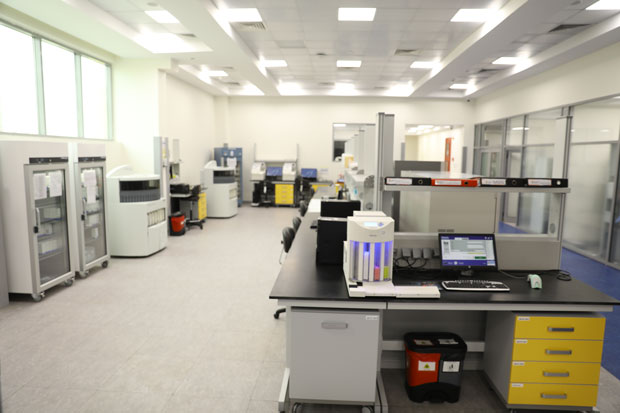Wilms Tumor Stratification Panel

Wilms Tumor Stratification Panel (LOH 1p/16q & 1q gain)
- Clinical Implications
- Stratification of favorable histology Wilms Tumor
- According to NCCN guidelines (version 2. 2021), molecular testing of tumor tissue (eg, LOH 1p/16q and 1q gain) is recommended to use in risk assessment for all newly diagnosed patients with Favorable histology Wilms tumors (FHWT) as LOH 1p/16q and 1q gain are associated with increased risk of relapse after initial therapy.
- The goal is to select therapy that will increase survival & decrease relapse, morbidity, and long-term adverse events.
- The current NCCN guidelines risk stratification includes consideration of molecular markers (LOH of 1p and 16q) along with the clinocpathologic parameters.
- 1q gain has been reported to be found as an independent prognostic marker for recurrence in WT patients occurring in about 25% of Wilms tumor cases and can predict 40% of relapses.
- Test Description
- Test approach
- Reporting name
- Test prerequisites (To ensure timely results)
- Patient’s demographic data.
- Clinicopathologic information:
- Pathology report (final or preliminary) including anatomic location.
- History of any given therapy for cancer and its date and relation to sample sent for molecular study (i.e. pre & post therapy). Therapy includes chemo and radiotherapy, hormonal or targeted therapy.
- Any other relevant clinical data or history.
- Type of sample:
- Preferred: Formalin-fixed, paraffin-embedded (FFPE) tumor tissue block.
- Acceptable:
- Section in Eppendorf: Up to 4 sections, each with a thickness of up to 10 μm and a surface area of up to 250 mm2 + good H&E slide for assessment.
- Five unstained slides + one good H&E slide.
- Specimen Minimum Volume: Two 10-micron sections of FFPE.
- Quality Control measures
- From your side:
- Double check you are fulfilling all required data before sending your sample.
- Check that your pathologist has selected the best block in terms of tumor cellularity, with least presence of necrosis and inflammation.
- Pretherapy sample is preferred (if underwent any cancer therapy).
- In our lab:
- Assessment of tissue for adequacy & tumor cellularity before any molecular analysis.
- Matching block ID with the report ID and demographic data.
- Matching the submitted block with the data reported in the pathology report.
- N.B.
- If the sample sent in Eppendorf, it is your pathology lab’s responsibility to ensure the sample in Eppendorf is corresponding to the submitted H&E slide (we can’t prepare slide from Eppendorf).
- This test does not include a pathology consultation.
- Test Time
- Retention of the sample
- Selected References
- Balis, F. et al. Wilms Tumor (Nephroblastoma), Version 2.2021, NCCN Clinical Practice Guidelines in Oncology, Journal of the National Comprehensive Cancer Network, 19(8), 945-977. Retrieved Jan 23, 2022, from https://jnccn.org/view/journals/jnccn/19/8/article-p945.xml
- Groenendijk A et al. Prognostic Factors for Wilms Tumor Recurrence: A Review of the Literature. Cancers. 2021. (3) Chagtai, T. et al. Gain of 1q As a Prognostic Biomarker in Wilms Tumors (WTs) Treated With Preoperative Chemotherapy in the International Society of Paediatric Oncology (SIOP) WT 2001 Trial: A SIOP Renal Tumours Biology Consortium Study. J. Clin. Oncol. 2016.
- Gratias, E.J. et al. Association of Chromosome 1q Gain With Inferior Survival in Favorable-Histology Wilms Tumor: A Report From the Children’s Oncology Group. J. Clin. Oncol. 2016
This test includes a charge for application of TaqMan™ CNV and the analysis pipeline are capable of detecting 1p and 16q Loss of heterozygosity. In addition to aberrations of 1q21 and 1q32.
DNA was isolated from both neoplastic tumor cells and normal surrounding tissue or patient blood. Analysis of 1p and 16q Loss of heterozygosity were performed using specific fluorescent labeled primers and fragment analysis by capillary electrophoresis. TaqMan Copy Number Variation Assays were used for quantitative polymerase chain reaction (qPCR) analysis of 1q aberrations.
Wilms Tumor Stratification panel
All samples are subject to stringent quality control measures that include:
From 7 days to 10 working days.
Client provided paraffin blocks & unstained slides (if provided) will be returned after testing is complete.